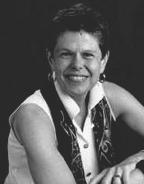| Performative Pedagogies: Religion and Ecology, Wilderness Spirituality |
![PDF-NOTE: Internet Explorer Users, right click the PDF Icon and choose [save target as] if you are experiencing problems with clicking.](http://rsnonline.org/templates/rsntemplate-smallmasthead/images/pdf_button.png) |
 |
|
Page 1 of 3 Bobbi Patterson, Emory University
Into the WildSome colleagues consider the “Wilderness Spirituality” course I teach an extreme sport. We often work outside on campus and hike and camp on the weekends. Yes, whatever the weather. A foundational exercise asks students to spend weekly time paying attention to, interrogating, and writing reflectively about a specific place of their choice on campus, as follows: Practicing Place: Discover and choose a place on campus — anywhere, but it must be on campus. Return to that place on a weekly basis. When you come to the location, take a few moments to settle yourself and to pay attention openly to the place as it is. Using contemplative analyses, open your categories and definitions and explore the place with your senses and intuitions. Examine details and describe the site. Then, if you like, you can make connections with readings we have done, memories, and scientific knowledge — any tools and perspectives are welcome. You need not write about your engagement with that place every week, though you must visit it every week. A regular report is welcome, but at least once a month you must include a portfolio entry about that specific place. It may be one of your required four entries or an extra fifth. See what happens by having a single place that you return to weekly — even for a short while. What are the a/effects on your insights, descriptions, categories, and aesthetic reflections in relation to that place over time? The directions ask the students to approach this learning as a lived experience, engaging their bodies, minds, and affections before tuning in to their conceptual categories. They experiment with the possibilities of joining the ongoing lived performance that generates that place. One objective of the assignment is to ask a generation of perpetually mobile, globally oriented people to immerse themselves in a particular local living system on a regular basis. Drawing their attention locally and turning down the speed of observation, a second objective asks them to further their investigations using tools gleaned from our texts on phenomenology and contemplative pedagogies (such as David Abram, Dorotheos of Gaza, Taliputra, and Thomas Merton). Several weeks into the class, portfolio entries attempting to eschew conceptual and linguistic categories and labels read like this: Begin with a smooth whoosh, baahaahaaaaaaa…of scent. Bum, BoomBOOMBOom, tat ratatatatatatttaaa as the green serrated discs begin to shuffle. (In plain language: A gentle breeze begins to blow. — written by a senior biochemistry major) Dialogues about these experiences and course texts drove us toward performing learning as critical reasoning through intimate participation with life (Zajonc). I use the phrase "performative learning" to foreground intersubjectivity, gestures, speech, affections, and cognition as the initiating sources of understanding and comprehension in daily life. Highlighting lived learning as interdependence naturally raised questions of ethics and responsibility. Practices of walking meditation, small group work, and analyses of historical and cultural factors thickened the plot by revealing more information and meaning-laden spaces and interactions. Inquiry became journey and narrative routed through daily living. Students described it in various ways: “I realize that I have been doing so much but actually aware of very little”; “I became an inhabitant with time, which triggered memories of places shaping my own past”; “Our relationship with the earth, however we imagine it, directly influences our treatment of the environment around us.” |


 Barbara (Bobbi) Patterson is a senior lecturer in the religion department and has served the Emory University community as the Associate University Chaplain, director of the Emory Scholars Program, founder of the Theory-Practice-Learning (TPL) Program, and a faculty associate of the Office of Sustainability Initiatives. Patterson received her BA from Smith College, MDiv from Harvard University, and PhD in religion from Emory University. Her current research focuses on the intersections of place, contemplative practices, and the ethics of sustainability. Patterson’s leadership in the classroom has earned her a Curriculum Award in Teaching Excellence from the Center for Teaching and an AAR Award for Excellence in Teaching. She has published numerous articles on the scholarship of teaching.
Barbara (Bobbi) Patterson is a senior lecturer in the religion department and has served the Emory University community as the Associate University Chaplain, director of the Emory Scholars Program, founder of the Theory-Practice-Learning (TPL) Program, and a faculty associate of the Office of Sustainability Initiatives. Patterson received her BA from Smith College, MDiv from Harvard University, and PhD in religion from Emory University. Her current research focuses on the intersections of place, contemplative practices, and the ethics of sustainability. Patterson’s leadership in the classroom has earned her a Curriculum Award in Teaching Excellence from the Center for Teaching and an AAR Award for Excellence in Teaching. She has published numerous articles on the scholarship of teaching.